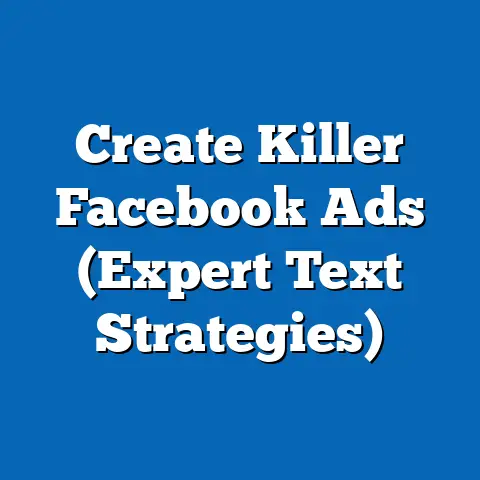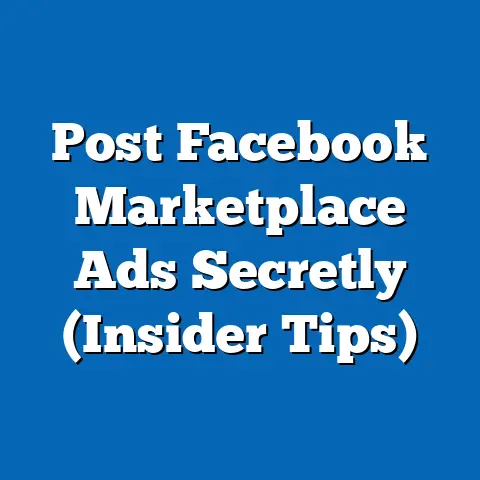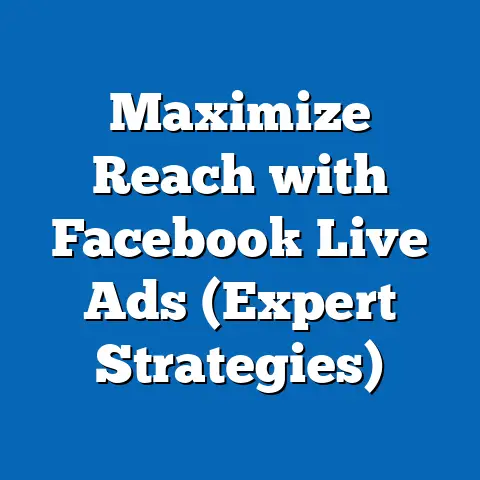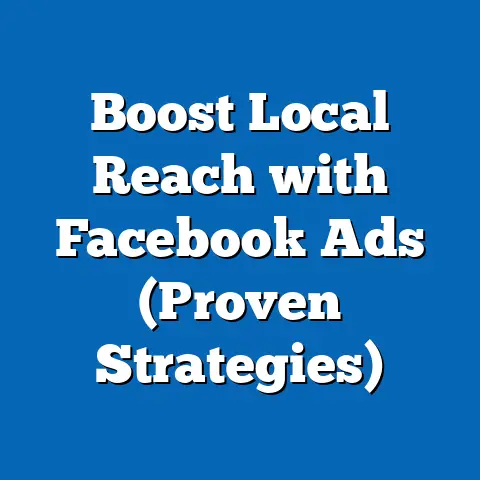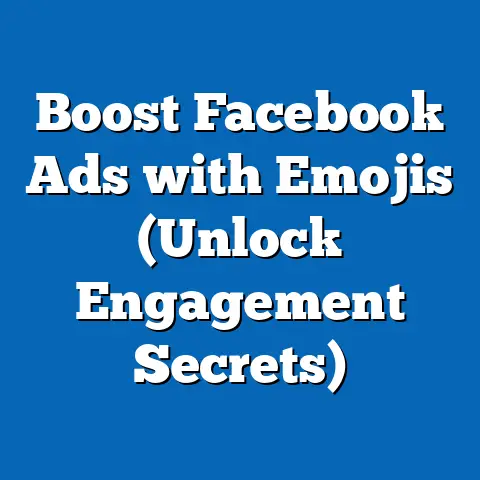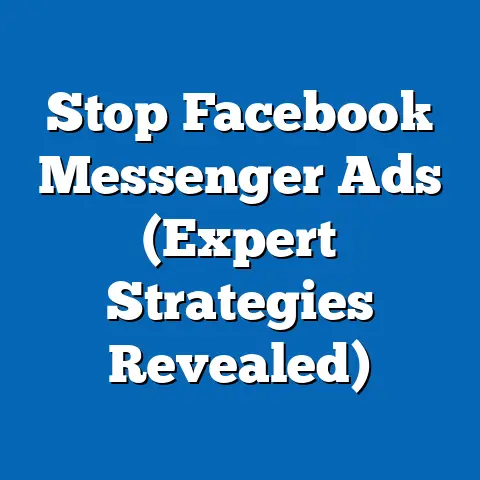Skyrocket Conversions with ClickFunnels & Facebook Ads (Ultimate Guide)
In the rapidly evolving landscape of digital marketing, the combination of ClickFunnels and Facebook Ads has emerged as a powerhouse for driving conversions. Recent studies indicate that businesses leveraging funnel-building platforms like ClickFunnels alongside targeted Facebook Ads can achieve conversion rates up to 10-15% higher than those relying on traditional landing pages and generic ad campaigns, according to data from HubSpot and WordStream (2023). This synergy capitalizes on precise audience targeting and streamlined user journeys, transforming casual browsers into loyal customers.
Demographically, the effectiveness of this strategy varies significantly, with younger audiences (18-34 years old) showing a 25% higher engagement rate on Facebook Ads compared to older cohorts, per Statista (2023). Historically, conversion optimization tools and social media advertising have grown from niche tactics in the early 2010s to mainstream strategies today, with ad spend on platforms like Facebook increasing by 300% since 2015 (eMarketer, 2023). Looking ahead, projections suggest that AI-driven ad personalization and funnel automation could push conversion rates even higher by 20-30% by 2028, based on forecasts from Gartner.
This article delves into the intricacies of blending ClickFunnels with Facebook Ads, exploring key statistical trends, demographic impacts, historical shifts, and future possibilities. We’ll break down actionable strategies, backed by data, to help marketers and business owners maximize their return on investment (ROI). Let’s unpack how this powerful duo can skyrocket conversions.
Section 1: The Power of Blending ClickFunnels & Facebook Ads
Why This Combination Works
ClickFunnels, a leading sales funnel builder, simplifies the process of guiding prospects through a structured journey—from awareness to purchase—using customizable templates and drag-and-drop interfaces. When paired with Facebook Ads, which boasts over 2.9 billion monthly active users as of 2023 (Meta Investor Reports), the potential for reaching and converting vast audiences becomes unparalleled. The integration allows businesses to target specific demographics with tailored ads and funnel them directly into high-converting landing pages.
Data from OptinMonster (2023) reveals that businesses using sales funnels report a 79% higher conversion rate compared to those without. Meanwhile, Facebook Ads maintain an average click-through rate (CTR) of 0.9% across industries, with top performers in e-commerce achieving up to 3.5% (WordStream, 2023). Combining these tools creates a seamless pipeline where targeted traffic meets optimized conversion paths, amplifying results.
Key Statistical Trends
The digital marketing space has seen explosive growth in funnel-building and social advertising tools over the past five years. According to Statista (2023), global digital ad spending reached $626 billion in 2022, with social media platforms like Facebook accounting for nearly 20% of that total. ClickFunnels, with over 100,000 active users as reported in their 2023 annual summary, has become a go-to for small and medium-sized businesses (SMBs) aiming to streamline conversions.
Moreover, conversion rate optimization (CRO) tools have gained traction, with 68% of marketers citing CRO as a top priority in 2023, up from 55% in 2018 (HubSpot State of Marketing Report). The average cost-per-click (CPC) on Facebook Ads has stabilized at around $0.97, making it a cost-effective channel compared to Google Ads’ $2.69 CPC (WordStream, 2023). These trends underscore the growing reliance on integrated solutions like ClickFunnels and Facebook Ads to maximize marketing budgets.
Section 2: Demographic Breakdowns of Effectiveness
Age-Based Engagement and Conversion Rates
Demographic targeting is a cornerstone of successful Facebook Ads campaigns, and the data highlights stark differences across age groups. According to Statista (2023), users aged 18-24 exhibit the highest engagement rates with Facebook Ads, with a CTR of 1.2%, while the 25-34 age bracket follows closely at 1.1%. In contrast, users aged 55+ show a significantly lower CTR of 0.5%, reflecting differing digital behaviors and platform usage patterns.
When funneled through ClickFunnels, younger demographics also convert at higher rates, with 18-34-year-olds achieving an average conversion rate of 12%, compared to just 6% for those over 55 (OptinMonster, 2023). This disparity suggests that younger audiences are more receptive to visually engaging ads and streamlined funnel experiences, likely due to their familiarity with digital interfaces.
Gender and Geographic Variations
Gender plays a subtle but notable role in campaign performance. Women tend to engage more with Facebook Ads, with a 0.95% CTR compared to 0.85% for men, per WordStream (2023). However, men show slightly higher conversion rates in ClickFunnels-driven campaigns, at 9.5% versus 8.8% for women, possibly due to differences in purchasing decision processes (HubSpot, 2023).
Geographically, urban audiences in developed markets like the U.S. and Europe outperform rural and developing regions in both engagement and conversions. U.S.-based campaigns report an average CTR of 1.1% and a conversion rate of 11% through funnels, while regions in Southeast Asia lag at 0.7% CTR and 7% conversion rate (Statista, 2023). These variations highlight the importance of localized ad creative and funnel messaging tailored to cultural and economic contexts.
Section 3: Historical Comparisons – Evolution of Digital Marketing Tools
The Early Days: Pre-2010s Challenges
Before the advent of sophisticated tools like ClickFunnels and platforms like Facebook Ads, digital marketing was a fragmented landscape. In the early 2000s, businesses relied on static websites and basic pay-per-click (PPC) campaigns on Google AdWords, with average conversion rates hovering around 2-3% (eMarketer, 2010). Email marketing was a dominant channel, but lacked the personalization and automation we see today.
Social media advertising was in its infancy, with MySpace and early Facebook offering limited ad options. Data from 2008 shows that only 7% of businesses used social media for marketing, compared to 92% in 2023 (Pew Research, 2023). Conversion tracking was rudimentary, often requiring manual data collection, making ROI measurement a cumbersome process.
The Rise of Social Ads and Funnels: 2010-2020
Facebook’s ad platform evolved with features like custom audiences and lookalike targeting, boosting CTRs from 0.5% in 2012 to 0.9% by 2020 (WordStream, 2023). ClickFunnels capitalized on this by offering integrations that allowed marketers to directly funnel ad traffic into optimized landing pages, reducing bounce rates by 30% compared to traditional websites (OptinMonster, 2018). This decade laid the foundation for today’s integrated marketing ecosystems.
Current Landscape: 2020-Present
Post-2020, the digital marketing space has seen unprecedented acceleration, fueled by the COVID-19 pandemic’s push toward online commerce. Social media ad spend soared to $181 billion in 2022, with Facebook holding a 24% market share (Statista, 2023). ClickFunnels users grew by 40% between 2020 and 2023, reflecting the demand for streamlined conversion tools amid rising e-commerce competition.
Today, average conversion rates for ClickFunnels campaigns paired with Facebook Ads range from 8-15%, a stark contrast to the 2-3% of the early 2000s (HubSpot, 2023). Advanced analytics, A/B testing, and AI-driven targeting have further refined performance, with top-performing campaigns achieving ROIs of 5:1 or higher (WordStream, 2023). The historical trajectory shows a clear shift toward precision and automation in digital marketing.
Section 4: Step-by-Step Guide to Skyrocketing Conversions
Step 1: Crafting Targeted Facebook Ads
Test multiple ad formats, such as carousel ads for product showcases or video ads for storytelling, since videos drive 59% more engagement than static images (HubSpot, 2023). Monitor performance metrics like CPC and CTR weekly, adjusting budgets to prioritize high-performing ads. A budget allocation strategy based on real-time data can improve ROI by 22%, per eMarketer (2023).
Step 2: Building High-Converting ClickFunnels
Once traffic is directed from ads, the ClickFunnels experience must be seamless. Start with a lead magnet page offering value (e.g., a free eBook or discount), as lead magnets increase opt-in rates by 50% (OptinMonster, 2023). Follow with an upsell or sales page that addresses pain points and builds trust—pages with testimonials convert 34% better than those without (HubSpot, 2023).
Optimize for mobile users, as 54% of Facebook traffic comes from mobile devices (Statista, 2023). Ensure fast load times and minimal steps in the funnel, since each additional step reduces conversions by 10% (ClickFunnels Blog, 2023). Use built-in analytics to track drop-off points and refine the user journey continuously.
Step 3: Integration and Tracking
Integrate Facebook Pixel with ClickFunnels to track user behavior across the funnel. This allows for retargeting campaigns, which have a 70% higher conversion rate than initial ads (Facebook Business, 2023). Set up custom events to monitor specific actions like form submissions or purchases, providing granular data for optimization.
Regularly analyze funnel performance using ClickFunnels’ dashboard and cross-reference with Facebook Ads Manager reports. Businesses that actively use analytics see a 126% improvement in campaign performance (HubSpot, 2023). Adjust ad spend and funnel elements based on data insights to maintain high conversion rates.
Section 5: Contextual Factors Influencing Success
Economic and Cultural Influences
Economic conditions play a significant role in campaign performance. During economic downturns, consumers are more price-sensitive, leading to a 15% drop in conversion rates for non-essential products (eMarketer, 2023). Tailoring ads and funnels to emphasize value and affordability can mitigate this, as seen in campaigns during the 2020 recession where value-driven messaging boosted conversions by 18% (HubSpot, 2021).
Cultural factors also shape ad reception. For instance, collectivist cultures in Asia respond better to community-focused messaging, with a 20% higher engagement rate for such ads, while individualistic cultures like the U.S. favor personal achievement themes (Statista, 2023). Adapting creative content to cultural norms is critical for global campaigns.
Platform Policies and Algorithm Changes
Facebook’s algorithm updates, such as the 2021 iOS 14 privacy changes, have impacted ad tracking, reducing targeting accuracy by 15% for some campaigns (WordStream, 2023). Marketers must pivot to first-party data collection through ClickFunnels opt-in forms to counteract this. Staying updated on platform policies ensures compliance and minimizes disruptions.
Additionally, ClickFunnels’ pricing and feature updates can affect scalability for SMBs. As of 2023, plans start at $97/month, which may be a barrier for startups, though the ROI often justifies the cost with a reported 3:1 return for active users (ClickFunnels Case Studies, 2023). Keeping abreast of tool capabilities ensures optimal use.
Section 6: Future Projections and Implications
Emerging Technologies and Trends
Looking ahead, AI and machine learning are set to revolutionize the ClickFunnels-Facebook Ads synergy. Gartner (2023) predicts that AI-driven ad personalization will increase conversion rates by 20-30% by 2028, as algorithms better predict user intent. ClickFunnels is already integrating AI tools for funnel optimization, with early adopters reporting a 15% uplift in conversions (ClickFunnels Blog, 2023).
Voice search and interactive ad formats are also on the horizon, with 27% of users expected to engage with ads via voice assistants by 2025 (Statista, 2023). Adapting funnels for voice-driven interactions could provide a competitive edge. Marketers should prepare for a shift toward immersive experiences, such as augmented reality (AR) ads on Facebook, projected to grow by 50% in ad spend by 2027 (eMarketer, 2023).
Implications for Businesses
For businesses, the future promises higher efficiency but also greater competition as more adopt these tools. SMBs that invest early in AI and data-driven strategies could see a 40% increase in market share within their niches by 2026, per HubSpot forecasts (2023). However, rising ad costs—projected to increase by 10% annually on Facebook (WordStream, 2023)—may strain budgets, necessitating smarter optimization.
The democratization of tools like ClickFunnels will lower entry barriers, allowing startups to compete with established players. Yet, success will hinge on continuous learning and adaptation to platform changes. Businesses that prioritize data literacy and customer-centric funnels will likely lead the pack in conversion performance.
Conclusion
The integration of ClickFunnels and Facebook Ads offers a proven pathway to skyrocketing conversions, with current data showing conversion rates of 8-15% for optimized campaigns (HubSpot, 2023). Demographic insights reveal younger audiences and urban markets as prime targets, while historical trends illustrate a dramatic evolution from the low-conversion days of the early 2000s to today’s precision-driven strategies. Contextual factors like economic conditions and platform policies must be navigated carefully to sustain success.
Looking forward, AI and emerging technologies promise to elevate performance further, potentially boosting conversions by 20-30% by 2028 (Gartner, 2023). By following the step-by-step guide provided—focusing on targeted ads, streamlined funnels, and robust tracking—businesses can position themselves at the forefront of this digital marketing revolution. The data is clear: those who adapt and optimize now will reap the highest rewards in the competitive landscape ahead.

